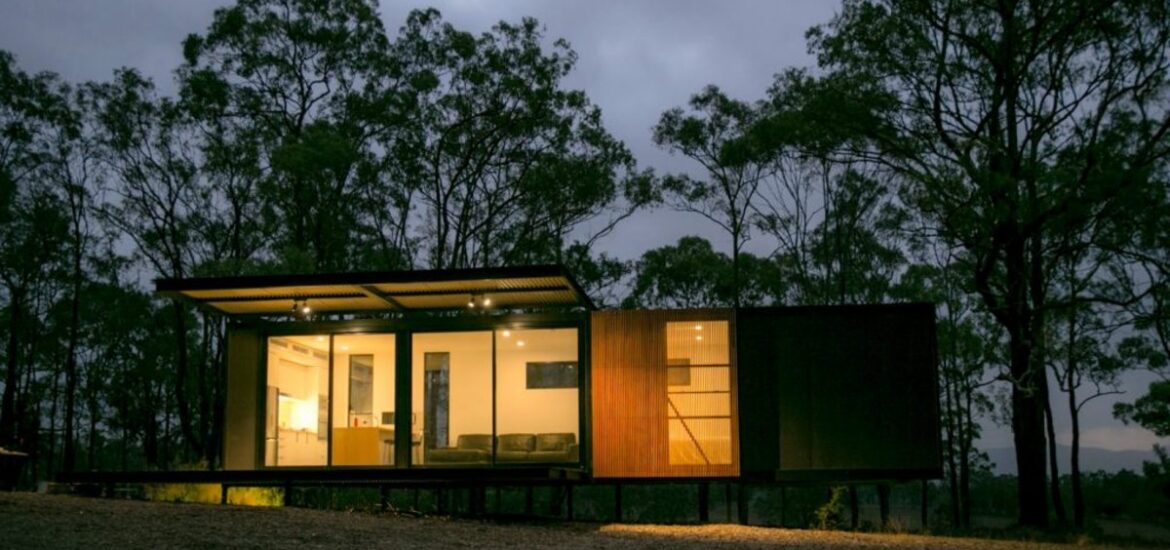Transforming Shipping Containers into Stylish Homes in Nairobi
In the heart of Nairobi, a quiet revolution is taking place. It’s not one led by politicians or protestors—but by architects, designers, and everyday dreamers who are boldly reimagining what it means to build a home. This revolution is shaped in steel and forged from creativity: shipping container homes.
Once used for transporting cargo across oceans, these metal giants are being reborn as sleek, modern, and affordable homes across Nairobi and its outskirts. If you’re looking for an innovative way to live stylishly without breaking the bank, then transforming a shipping container into a home might be your best move yet.
In this in-depth guide, we’ll explore:
- Why container homes are becoming a trend in Nairobi
- Step-by-step process to convert one into your dream home
- Costs involved
- Real-life examples and case studies
- Design inspiration
- Pros, cons, and legal considerations
- And much more!
📸 [Insert Image: A stylish container home surrounded by greenery in Karen, Nairobi]
Why Shipping Container Homes Are Trending in Nairobi
1. Affordable Housing Crisis
The cost of buying or building a home in Nairobi is becoming increasingly prohibitive for many middle-class and young professionals. Container homes offer a cost-effective alternative.
2. Urban Space Shortage
With land becoming scarcer and more expensive, Nairobians are seeking compact yet stylish living solutions. Shipping containers are ideal for small plots and urban infill projects.
3. Modern Aesthetic Appeal
Container homes bring a sleek, industrial-modern look that appeals to Nairobi’s growing class of young creatives, digital nomads, and eco-conscious homeowners.
4. Sustainability
Repurposing containers is an environmentally friendly solution. It reduces construction waste, cuts down on traditional building materials, and supports green building practices.
5. Speed of Construction
While traditional homes can take up to a year to build, a container home can be ready in 3–4 months, depending on design and finish.
📸 [Insert Image: Interior of a Nairobi container home with Scandinavian minimalist décor]
Step-by-Step Guide: Turning a Shipping Container into a Stylish Home
Let’s break it down into manageable phases to help you transform a basic container into a livable, luxurious space.
Step 1: Define Your Vision
Start by asking yourself:
- How many people will live in the container home?
- Will it be a full-time residence or a holiday home?
- Do you want a single unit or a multi-container design?
Tip: Sketch your ideas or use software like SketchUp, Floorplanner, or consult a container architect for design assistance.
Step 2: Choose the Right Container
Common Types:
- 20ft container (160 sq. ft.): Ideal for studios or single-person units.
- 40ft container (320 sq. ft.): Great for 1–2 bedroom homes.
- High-cube container: One extra foot of height (9.6ft) for better insulation and headroom.
Where to Buy in Nairobi:
Look for reputable dealers in Industrial Area, Syokimau, or Mombasa Road, offering inspected and wind/watertight units. Always inspect in person before purchase.
📸 [Insert Image: Container yard in Nairobi with different container sizes and conditions]
Step 3: Secure Land and Permits
Even though container homes are unconventional, you still need legal permissions to erect one in Nairobi.
You’ll need:
- Land ownership or lease documents
- Architectural plans
- County government approvals (Nairobi City County)
- National Construction Authority (NCA) registration
- National Environment Management Authority (NEMA) clearance for some locations
Pro Tip: Hire a local architect who understands the compliance process to streamline approvals.
Step 4: Design and Fabrication
At this stage, your container is transformed into a liveable space.
Key Design Considerations:
- Flooring: Vinyl, hardwood, or tiles
- Windows & Doors: Double-glazed for insulation and aesthetics
- Wall Lining: Insulated with rock wool or polyurethane foam
- Partitions: Wood or metal frames to create rooms
- Roofing: Flat or slanted steel sheet with thermal insulation
Many companies in Nairobi specialize in container conversion and offer turnkey solutions—from welding and cutting to interior finishing.
📸 [Insert Image: Work-in-progress container being insulated and partitioned in a Nairobi workshop]
Step 5: Connect Utilities
- Electricity: Wired through conduits and connected to mains or solar power
- Plumbing: Water inlets, drainage, and optional greywater recycling
- Internet: Fiber-ready homes are becoming standard in Nairobi
- Ventilation: Critical in Nairobi’s warm climate—use ceiling fans, louvre windows, or mechanical vents
Step 6: Interior Decoration and Styling
Here’s where your container becomes a stylish, personalized home.
Design Themes You Can Explore:
- Minimalist Scandinavian: White walls, wood accents, clean lines
- Boho-Chic: Earth tones, textiles, indoor plants
- Urban Industrial: Exposed metal, concrete floors, Edison bulbs
- Tropical Kenyan: Warm colors, cultural artifacts, woven textures
Use multifunctional furniture to save space—think fold-down beds, storage benches, and modular sofas.
📸 [Insert Image: Compact living room with built-in storage and cozy lighting in a container home]
Step 7: Landscaping and Outdoor Living
Make the outdoors part of your home.
- Add a deck or rooftop garden
- Create green walls or vertical gardens
- Use gravel or tiles around the home to reduce mud during rainy seasons
- Incorporate solar lighting and water tanks
A container home is more than just the metal box—it’s the entire experience, inside and out.
How Much Does It Cost to Build a Container Home in Nairobi?
Here’s a rough breakdown of the budget for a 40ft container home in Nairobi:
| Item | Estimated Cost (KES) |
|---|---|
| 40ft High Cube Container | |
| Fabrication and Welding | |
| Insulation and Finishing | |
| Windows, Doors, Flooring | |
| Plumbing and Electrical | |
| Roofing and Landscaping | |
| Permits and Professional Fees | |
| Total Estimated Cost |
Compared to a traditional home of the same size (often costing over KES), this is a smart investment for budget-conscious urban dwellers.
📸 [Insert Image: Before and after photo of a Nairobi container home transformation]
Success Stories: Nairobi Residents Living the Container Dream
1. Kelvin & Wanjiku in Ruaka
The couple built a 2-bedroom container home on their quarter-acre land. The design includes a deck, solar panels, and rainwater harvesting system. They report utility bills under KES 2,000/month and love the minimal lifestyle.
2. Linda in Rongai
As a freelance designer, Linda converted a 20ft container into a studio home-office combo. She showcases it on Airbnb as a unique staycation spot—earning passive income while enjoying her tiny home.
3. Eco-Luxury Lodge in Kajiado
A lodge built entirely from containers now serves as an eco-tourism hotspot, combining modern luxury with rustic charm. It draws international travelers looking for sustainable living experiences.
Pros and Cons of Container Homes in Nairobi
| Pros | Cons |
|---|---|
| Affordable construction | Can get hot without proper insulation |
| Fast build time | Limited width (typically 8 feet) |
| Eco-friendly and sustainable | Not always accepted by traditional banks |
| Modern and trendy design options | Steel requires rust-proofing maintenance |
| Easy to expand (add more containers) | Needs careful ventilation planning |
📸 [Insert Image: Floor plan of a 2-bedroom container home in Kenya]
Tips to Maximize Comfort and Style in Container Homes
- Use light colors to make small spaces feel bigger
- Install large windows or sliding glass doors to increase natural light
- Invest in insulation—don’t cut corners here
- Mix textures (wood, fabric, metal) to add warmth
- Install skylights or roof windows for dramatic lighting
Can You Get Financing for a Container Home in Nairobi?
While mainstream banks may be slow to embrace container homes, alternative lenders, SACCOS, and personal loans are increasingly used.
Also, if your container home is part of a larger development or located in a prime area, some mortgage firms will consider financing.
The Future of Container Living in Nairobi
As land prices continue to climb and sustainable living gains momentum, container homes offer a practical, stylish, and forward-thinking solution. They’re not just a trend—they’re a response to the needs of a changing city.
Imagine a Nairobi where entire neighborhoods are built from recycled containers—affordable, self-sufficient, and architecturally stunning. That future might be closer than you think.
📸 [Insert Image: Container home community concept rendering for Nairobi suburbs]
Final Thoughts
Transforming shipping containers into stylish homes in Nairobi isn’t just about saving money—it’s about rethinking how we live, how we build, and how we impact the world around us.
Whether you’re dreaming of your first home, a creative studio, or a sustainable investment property, container homes offer a versatile, affordable, and modern solution for today’s challenges.
And in a city as dynamic as Nairobi, there’s no better place to start that journey.
✅ Ready to Build?
We can connect you with reliable container suppliers, architects, and interior designers in Nairobi who specialize in container housing. Reach out today and let’s make your dream home a reality—one container at a time.

